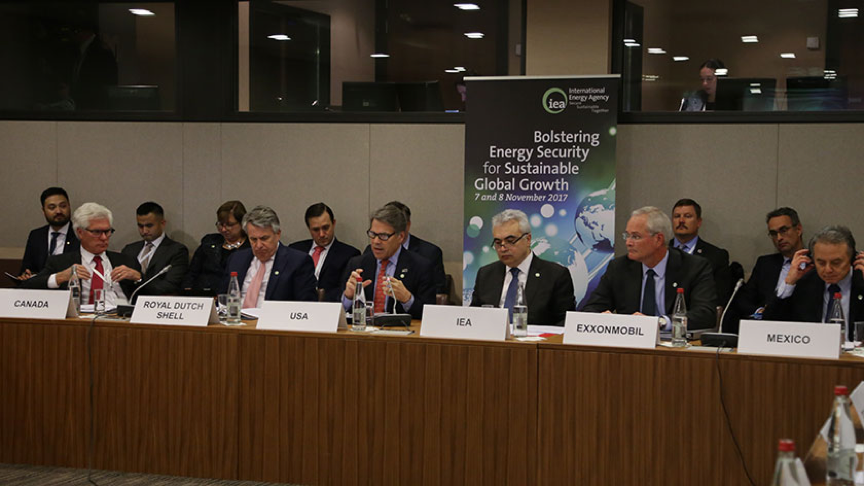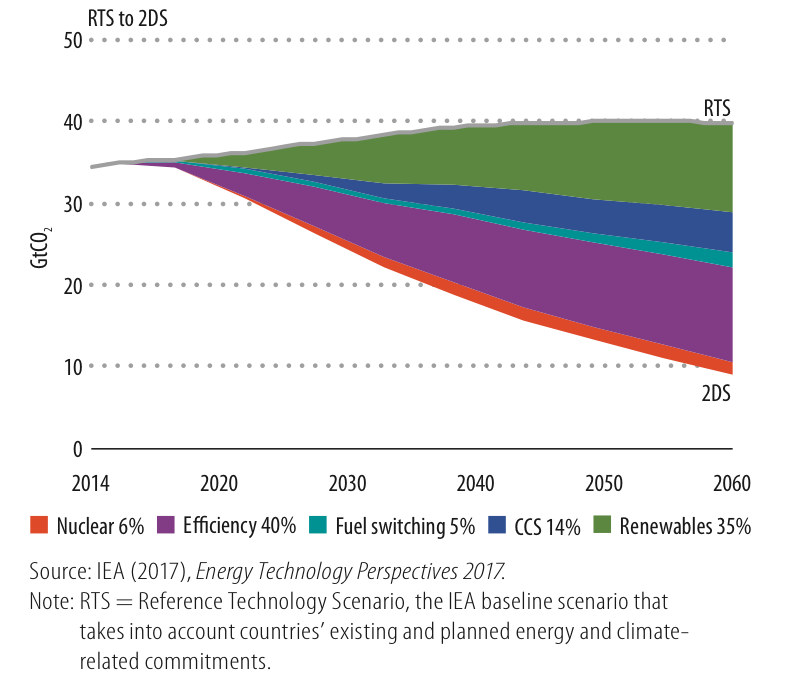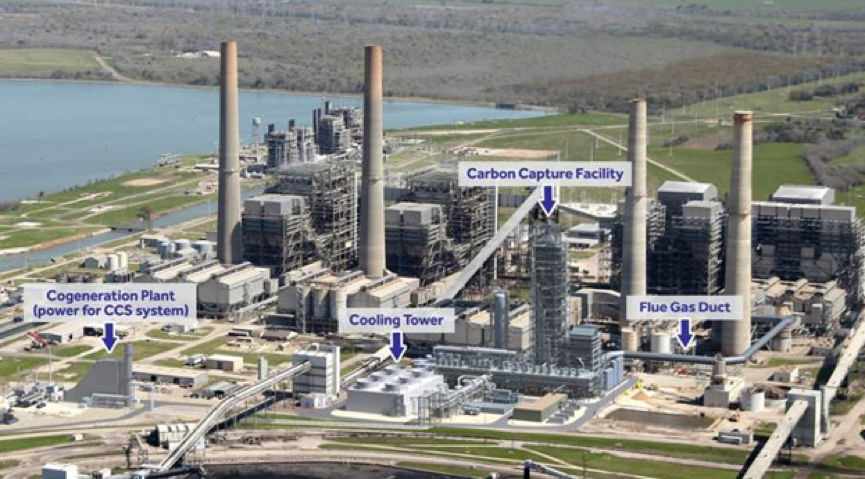[NGW Magazine] Carbon Capture, Use & Storage
Energy outlooks assume that CCS will make commercial sense. The IEA, whose scenarios rely on it for meeting emissions targets, is taking action in the hope that it soon will.
Carbon capture, use and storage (CCUS) received a strong boost at a summit organized by the International Energy Agency (IEA) in Paris November 7. Many senior government officials, energy ministers and CEOs from most major oil and gas companies and industry took part and supported a renewed push for investment in CCUS to tackle greenhouse gas emissions and meet global climate targets..
In terms of countries, the summit included Australia, Canada, the EU, Japan, Mexico, the Netherlands, Norway, Poland, the UK and the US. Companies participating included BP, Chevron, Dow Chemicals, ExxonMobil, GE Power, Glencore, Mitsubishi, Port of Rotterdam, Shell, Statoil, Suncor and Total. This made the summit the highest level of industry and government engagement seen so far on CCS.

Source: IEA
The summit concluded that CCS offers an important and unique technology solution to deliver the deep emissions reductions needed in industry and the power sector, while also supporting energy security and protecting substantial capital investments in existing infrastructure.
IEA head Fatih Birol, who co-chaired the summit, said: “Global energy leaders recognise that urgent action is needed to support this essential technology and are demonstrating their preparedness to work together to achieve this.”
Analysis prepared by the IEA on 'Five ways to unlock CCS investment' formed the basis of the discussions at the summit. It showed that global investment is lagging behind. New analysis from the IEA finds that large-scale CCS projects have received around $10bn in capital investment around the world, while low-carbon energy investments received $850bn last year alone.
In IEA’s view the world faces an unprecedented challenge in achieving climate objectives. Without CCS, this challenge becomes infinitely greater. IEA’s scenario analysis has consistently highlighted that CCS will be critical for delivering the deep emission reductions needed across fossil fuel-based power and many industrial applications.
The summit discussed five key approaches to unlock CCS investment:
- Harvest “low-hanging fruit”, where commercial factors are more favourable, to build CCS deployment and experience from the ground up
- Tailor policies to shepherd CCS through the early deployment phase and to address the unique integration challenges for these facilities
- Target multiple pathways to reduce costs from technology innovation in carbon capture and CO2 utilisation to progressive financing arrangements
- Build CO2 networks and accelerate CO2 storage assessments in key regions
- Strengthen partnerships and co-operation between industry and governments.
At the end of the summit the co-chair, US Energy Secretary Rick Perry, said: “Today’s summit at the IEA provided a unique opportunity to gather with my counterparts and industry leaders to discuss the future of CCS…While we come from different corners of the world, we can all agree that innovation, research, and development for CCS technologies can help us achieve our common economic and environmental goals.”
CCS in global energy transformation
In the IEA 2degC scenario (2DS), CCS provides 14% of the cumulative emission reductions needed in the period to 2060 to limit future temperature increases to 2degC (Figure 1).
Figure 1: CCS contribution to cumulative emission reductions

Source: IEA
CCS is not new technology. It has been in existence for many years. In has been in use in oilfields for enhanced oil recovery (EOR) since the 1970s. The availability of a revenue stream from CO2 EOR has supported investment decisions in three-quarters of CCS projects to date. This is expected to remain a major factor in supporting more EOR-related CCS investment in the Middle East and China.
There are 21 large-scale, integrated CCS projects operating or under construction throughout the world and across various applications, including coal-fired power generation, natural gas processing, steel manufacture and oil sands upgrading.
One of these is the Petra Nova CCS project near Houston Texas which began operations in January 2017 (Figure 2). At its current level of operation, it will capture more than 5,000 metric tons/day, which will be used for EOR at the West Ranch Oil Field. It is expected to boost oil production from 500 barrels/day to about 15,000 barrels/day. During performance testing, the system demonstrated a carbon capture rate of more than 90%.
Figure 2: Petra Nova CCS project in Texas

Source: Petra Nova
The major barrier to CCS deployment is no longer technological, but political and commercial. This is despite the fact that a recent study in the UK found that there is a 5:1 payback to the economy for every dollar invested in CCS.
CCS is an emissions mitigation technology, but it also contributes to broader energy security, environmental and economic goals during global energy system transformation. Without it, the continued, cleaner, use of fossil fuels would be challenged, including the value of substantial capital investments in coal and gas-fired power and industrial infrastructure, which would otherwise run the risk of becoming stranded assets.
A failure to boost momentum in CCS investment in the near term will have implications for future climate goals. As the Intergovernmental Panel on Climate Change (IPCC) has highlighted, the ability to achieve long-term climate targets depends to a greater extent on directing efforts towards “developing the technologies and institutions that will enable future deep emissions cuts rather than exclusively on meeting particular near-term goals.” CCS holds significant potential to support these deep emission reductions across the global energy sector, but there is a need to build a strong foundation today.
Need for more investment in CCS
Much can be learnt from successful applications of CCS so far. According to the IEA, large-scale CCS investment has occurred in circumstances where economic, policy and project-specific factors have been sufficiently aligned to establish a business case. The factors that have been critical to securing an investment decision have included strong and sustained government support, revenue streams for captured CO2, favourable geology, low development costs, the impact of emission performance standards, the commercial structure of the project and the political environment.
Conversely, factors that have contributed to projects not proceeding included lack of adequate and consistent policy support, large up-front capital investment, long lead times, highly prescriptive and inflexible programme requirements, failure to resolve or balance risks that are unable to be managed or taken by commercial entities, lack of commercial CO2 storage options, higher than expected project costs, and community opposition.
The IEA concluded that in order to ensure the wider adoption of CCS, tailored, fit-for-purpose policy measures will be needed to secure commercial CCS investment, in much the same way as was done to achieve rapid advancement of renewable energy. Policy mechanisms for CCS should ideally be implemented within the context of a clear, long-term vision for climate and energy policy that articulate a role for CCS. Increased carbon pricing may also help.
The IEA states that more projects will be needed to realise the significant potential for learning-by-doing cost reductions and to accelerate the pathway to commercialisation. Deployment can also foster innovation in new technologies with potential for further cost reductions.
This will also enable practical CCS experience for policy and regulatory frameworks to evolve in key regions and to retain and expand institutional and technical capacities. This includes industry and government as well as banks and insurers.
China taking the lead… again
While the rest of the world is taking hesitant steps towards the wider implementation of CCS, as with other areas of clean energy technology China is taking the lead. It is planning to capture millions of tons of CO2 generated by its energy and steel plants for use in extracting crude oil from the country’s depleting oilfields. EOR is making such projects commercially attractive. Construction has already begun on the Yanchang Integrated CCS Project, designed to capture 410,000 mt/yr of CO2 from a coal-to-gas plant in Shaanxi province.
In fact, China has a further seven CCS projects in the pipeline, which would store a total of 9mn tons of CO2 a year. Four of these projects are for coal-to-gas plants. The next wave of CCS projects is expected to happen in China, with the country accounting for half of CCS plants under serious consideration worldwide.
Further, state-owned enterprises in China’s heavy industry sectors, including cement and steel, have begun considering adding equipment to existing plants that would allow them to capture about 90% to 95% of their carbon emissions.
The IEA estimates that in 2020, China will have 330 GW of coal-fired plants that could potentially be retrofitted with emission-reduction technology. The country appears to appreciate the importance of CCS in reducing emissions from fossil fuel use, while enabling important resources such as coal to continue to contribute to energy security and the economy.
Summit outcome
The summit participants discussed the need for a significant and urgent boost to CCS investment. Building more facilities will be critical to expand commercial experience and to continue to drive down costs. Strengthened partnerships between governments and industry should necessarily be at the heart of efforts going forward, recognising the particular importance of CCS for many industries and companies.
The IEA can provide leadership through its role in bringing together industries, governments and researchers to support the expanding global CCS effort. This can be supported by other important initiatives such as the Carbon Sequestration Leadership Forum, the Clean Energy Ministerial, the Global CCS Institute and Mission Innovation.
In order to continue the important dialogue started at the summit, the IEA agreed to host a policy and investment workshop in 2018 that will provide an opportunity to develop a detailed work plan based on the identified priority areas for action and cooperation. The IEA will also convene future meetings with ministers and industry leaders to strengthen this cooperation and build momentum in the global CCS effort.
The summit issued a summary of its findings which, in addition to the IEA, was signed by co-chair Rick Perry, in a rare show of support by the US demonstrating the importance of this global environmental initiative. These findings recognise that urgent action is needed to support CCS and demonstrate readiness of the summit participants to work together to achieve this.
Charles Ellinas



